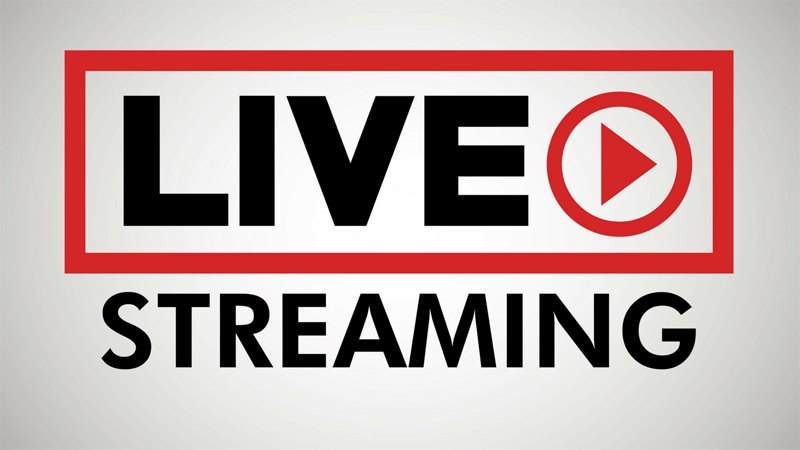From live DJ sets to mass meditation practices and interactive debates, livestreaming is now a fully integrated part of mainstream culture. Using this medium as a marketing tool is challenging but with the right approach, it can be one of the most effective ways of building a solid and very loyal base of followers. Here are some of Probella’s tips on how to make livestreaming work for you in 2019.
Clarity is everything
This is true when it comes to sound as well as vision. Your audience could be watching on any type of device, so need to make sure you aren’t just catering for poor quality laptop speakers and low-resolution screens. Work within your budget but see a decent quality webcam as a solid investment, rather than a painful expense. It’s so obvious, but when trying to save a little money, businesses can often overlook the simple fact that no matter how good your content is, if its lower quality than an old VHS tape, nobody will be watching for long.
Act as if you were speaking to an audience in person
Like writing, there are numerous different presentational styles and what can be appropriate for one medium, is potentially unsuitable for another. Your audience, no matter what their age or demographic, will respond well if you create a sense of connection between you and them. By responding to comments in the live chat, reacting on camera and even encouraging some participation from your online viewers, you’re offering a very different experience to a bearded blogger discussing a product they used in the past tense. The immediacy of this is medium is part of its appeal, so capitalise on this. Don’t be afraid to deviate from a script if there’s genuine value in doing so, but also be mindful that attention spans and tolerance for mistakes are often pretty limited.
Repetition isn’t necessarily a bad thing
Unlike a physical lecture or a recorded piece to camera, livestreaming attracts an audience that can potentially fluctuate throughout the broadcast. This means that its common for viewers to drop in and out, arrive halfway through or to watch a very short burst. Repetition is something of a double-edged sword. Making sure you get any key messages across to the majority of your viewers is essential but sounding like a scratched vinyl record can become very grating, very quickly. A good strategy is to set silent reminders at specific intervals. This way you can still repeat your call to action or any contact information, but you can do it in a way that sounds a little more organic.
Measure Engagement and Only Stream When People Are Watching
Though you can have a recording of any broadcast you make when livestreaming just seconds after doing it, the whole point is to provide your audience with a “live” experience. Things like interactive polls, phone ins, games and debates don’t work when the information is only being transmitted one way. Check your daily, weekly and monthly stats for trends and identify when your peak times are. You can still broadcast outside of these, just don’t expect a huge number of consistent viewers and never air your best content on streams with low numbers.
Offer something more than a distraction
There’s so much digital content available now that your livestream is competing against the likes of Joe Rogan, Russel Brand and Zoella. You probably don’t have the same kind of budget for guests as the names we’ve just mentioned, but there are things you can do to make sure your stream doesn’t get lost in a sea of uninspiring, lacklustre content. Use format variations to keep things interesting, include idents and jingles if it suits your brand image and treat the audience as if they are constantly watching. Jokes, news updates and even some commentary on the days trending topics can also be solid ways to provide something unique and relevant.
Test the stream before you go live and have backup options
Losing a livestream for more than a few minutes is always an unmitigated disaster. It breaks the flow; users inevitably lose interest and forget to come back and worst of it all it makes you look unprofessional. Have a test run a few minutes before the real live stream just to make sure everything is operating as it should be. If you have a core of regular viewers, you could ask them to help you verify the stream is working. Even some professional organisations with millions of daily viewers forget this step sometimes and the outcome is never positive.
Learn to ad lib
Unless you’re a professionally trained actor, its extremely obvious when somebody is reading directly from a script. Interjections in the live chat, unexpected issues with sound or image quality and many other unpredictable but inevitable hurdles mean that live streaming requires a degree of adaptability. Being able to ad lib without sounding as if you’re just stalling or filling the time is skill that takes time to learn. If you’re thrown off topic but the audience seems to be going with it, embrace this. If you suddenly run out of things to say about a certain topic, have a few back up ideas to use keep things flowing organically. Awkward silences and too many “erms” will always drive people away.
Ask Your Viewers to Subscribe, Like and Share Every Time You Stream
Streaming requires you to have regular subscribers and sharers as much as recorded content. Though it makes videos sound very repetitious and less organic than something like a live TV broadcast, directly asking your viewers to like, subscribe and share your content as much as possible is a necessary evil. Adding an incentive can be helpful. For example, exclusive content for subscribers only or the opportunity to win competitions and receive free products will give people a tangible reason to spend those seconds clicking around.






